First Coherent Renewables Scenario: Bent Sørensen in 1970s
First Posted: 2019.06.23, Last Revised: 2019.06.23, Author: Tom Brown
Who came up with the first coherent plan to use renewables to cover all our energy needs?
My money is on Bent Sørensen, who wrote these two ground-breaking papers in the 1970s:
https://doi.org/10.1126/science.189.4199.255 (1975)
https://doi.org/10.1016/0038-092X(78)90124-X (1978)
He deserves more credit.
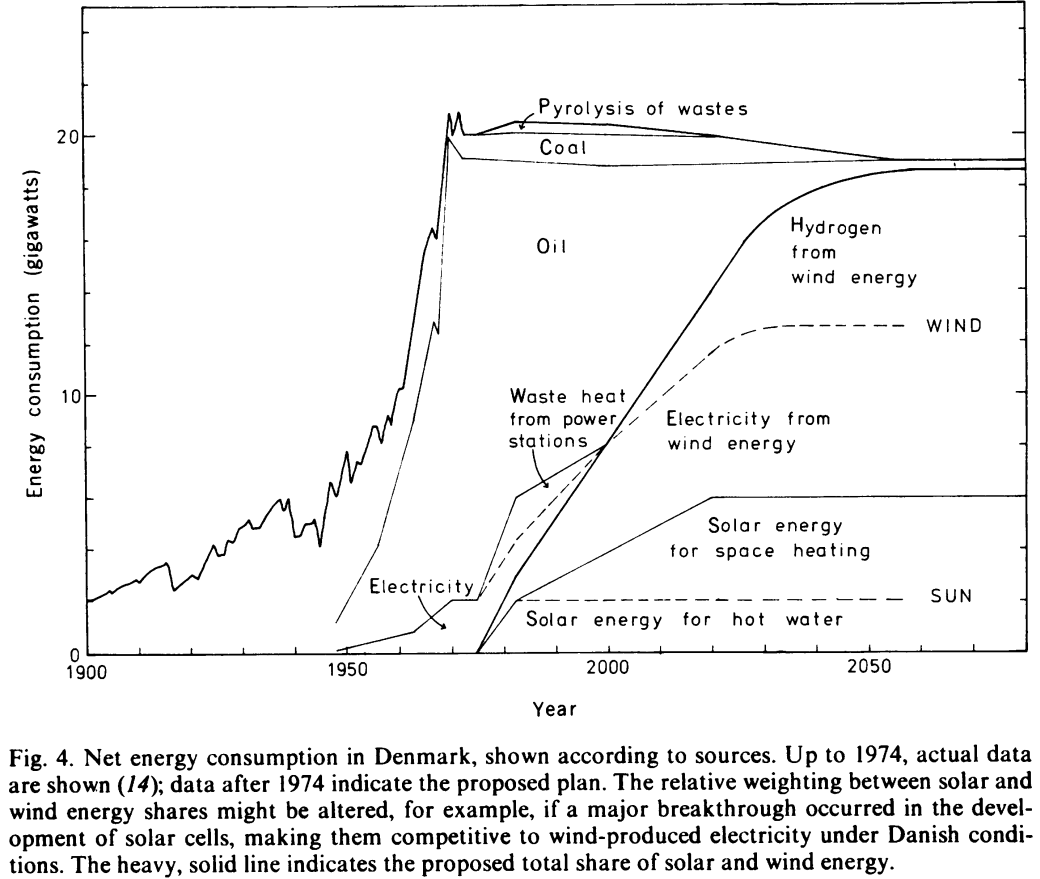
By "coherent" I mean that it covers all energy sectors (electricity, heating, transport, industry) and it's technically, economically and socially viable. In particular, it considers the short- and long-term balancing needed to deal with the variability of wind and solar.
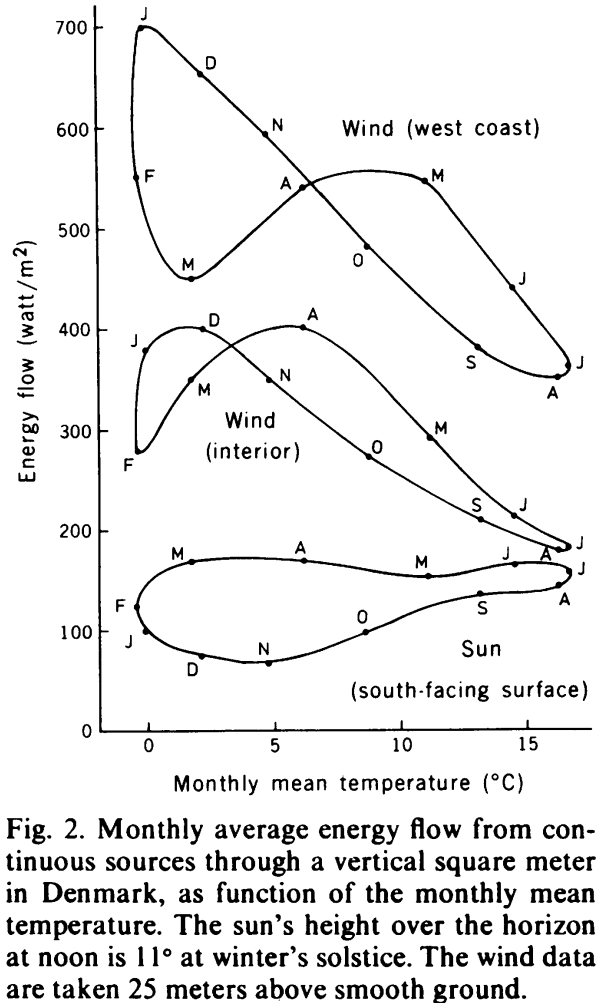
The first paper looks at the big picture for Denmark: what are the feasible energy potentials?
Hydro and geothermal are limited, so it focuses instead on wind and solar.
His 1975 plan to use "continuous" (i.e. versus finite fossil) energy sources tackles the four major sectors:
electricity: wind turbines spread north to south along Juttland, with multi-day balancing from compressed air energy and hydrogen storage (electrolysis then fuel cell) in underground salt domes; wake effects and area requirements for the turbines are taken into account
In his 1978 paper he does computer simulations for meeting demand using hourly-measured wind data. He finds a combination of short-term storage (e.g. batteries) and 40-60 days of long-term storage with a 50% round-trip loss can provide a reliable supply from wind. Residual load:
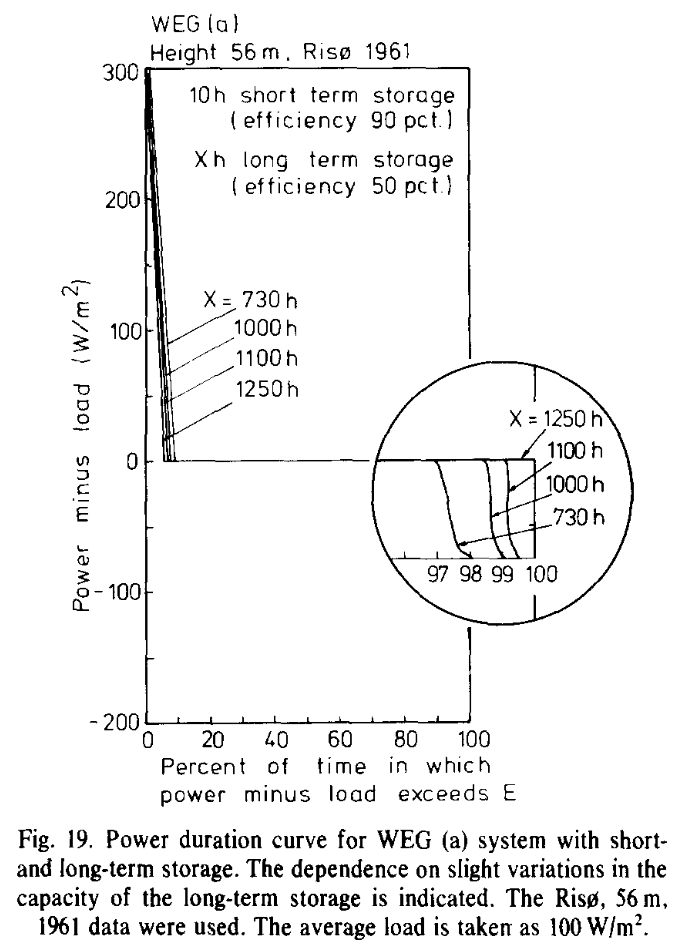
These results parallel those from a paper by Ken Caldeira and colleagues from 2018 looking at solar+wind in the US discussed in this thread [see also MIT Technology Review: The $2.5 trillion reason we can’t rely on batteries to clean up the grid].
heating: improved building insulation, solar thermal collectors plus long-term thermal energy storage in giant hot water tanks, backup from resistive heaters; frictional heating from wind turbines is an option; combined heat and power plants are there on pathway to 2050
transport: "hydrogen or other synthetic fuels" - but "various types of batteries might take the place of hydrogen as a storage medium"
industry: more material recycling and hydrogen for process heat
The 2000 2nd version of his Renewable Energy textbook (perhaps more famous than the papers) includes global scenarios for a renewables-based world.
What did he get wrong?
It hasn't happened as quickly as he hoped. As he notes at the end:
"the initial cost per energy unit produced is higher than for most of the alternatives, so that action is not expected to be taken immediately as a result of purely private initiative"
But he emphasises often-overlooked points such as more jobs (Denmark had 10% unemployment at the time), improved balance of payments, energy security, and environment. I would add the huge health benefits from reduced air pollution.
On the technology side, he acknowledges the potential of solar cells (PV) but didn't anticipate the huge price drops; heat pumps don't get a look-in; the improvements in battery technology and cost weren't anticipated. Chemical GHG emissions (e.g. calcination) are ignored.
So what did he get right?
Denmark has indeed seen a big build-out of wind energy, building insulation, with CHP as a stop-gap solution to improve energy efficiency. Solar thermal with seasonal water tank storage is deployed in some district heating networks.
I would argue that our overall understanding of the system integration needs for wind and solar hasn't changed much over the last 40 years. We need to couple electricity-heat-gas better, so that we can leverage abundant cheap short- and long-term storage options.
We've know since 1975 how to build a zero-emission, socially-acceptable energy system. We could have done it while we still had time to avoid climate breakdown. We can still do it now and avoid the worst consequences.
What are we waiting for?
[end of main thread]
And now for some minor points:
He considers energy savings from shopping by "selecting merchandise from computerized video displays" - hooray for the future!
His motivation for renewables?
In 1973 Denmark was 94% reliant on imported oil for energy, so the oil crisis was a big one, along with finite fossil fuels, poor fossil resources within Denmark (this was before the North Sea gas fields were exploited) and "climate disruptions"
He rejects nuclear because i) uranium supplies can be monopolised, whereas renewables are "more equitably distributed over the world". This has proved to be less of a concern, but more pertinent is ii) the size of the units implies a concentration of capital and monopoly power.
He harvested a sceptical response from arch-renewables-rebutter Ted Trainer already in 1984:
The limitations of alternative energy sources
He considers inter-annual variability of wind and solar, often neglected by modellers:
"Fluctuations between years might alter these values [average wind/solar feed-in] by as much as a factor of 2"
The 1975 paper has a nuanced description of the "lack of universal relationship between energy consumption and economic growth" which might be appreciated by some.
There's a bit more explanation on the wind+storage duration curves here.
The 1978 paper also has an early diagram of a Smart Energy System (@ProfHLund @BrianVad) that integrates electricity, gas and heating grids, allowing us to leverage cheaper gas and heat storage rather than expensive electricity storage, and use waste heat for district heating
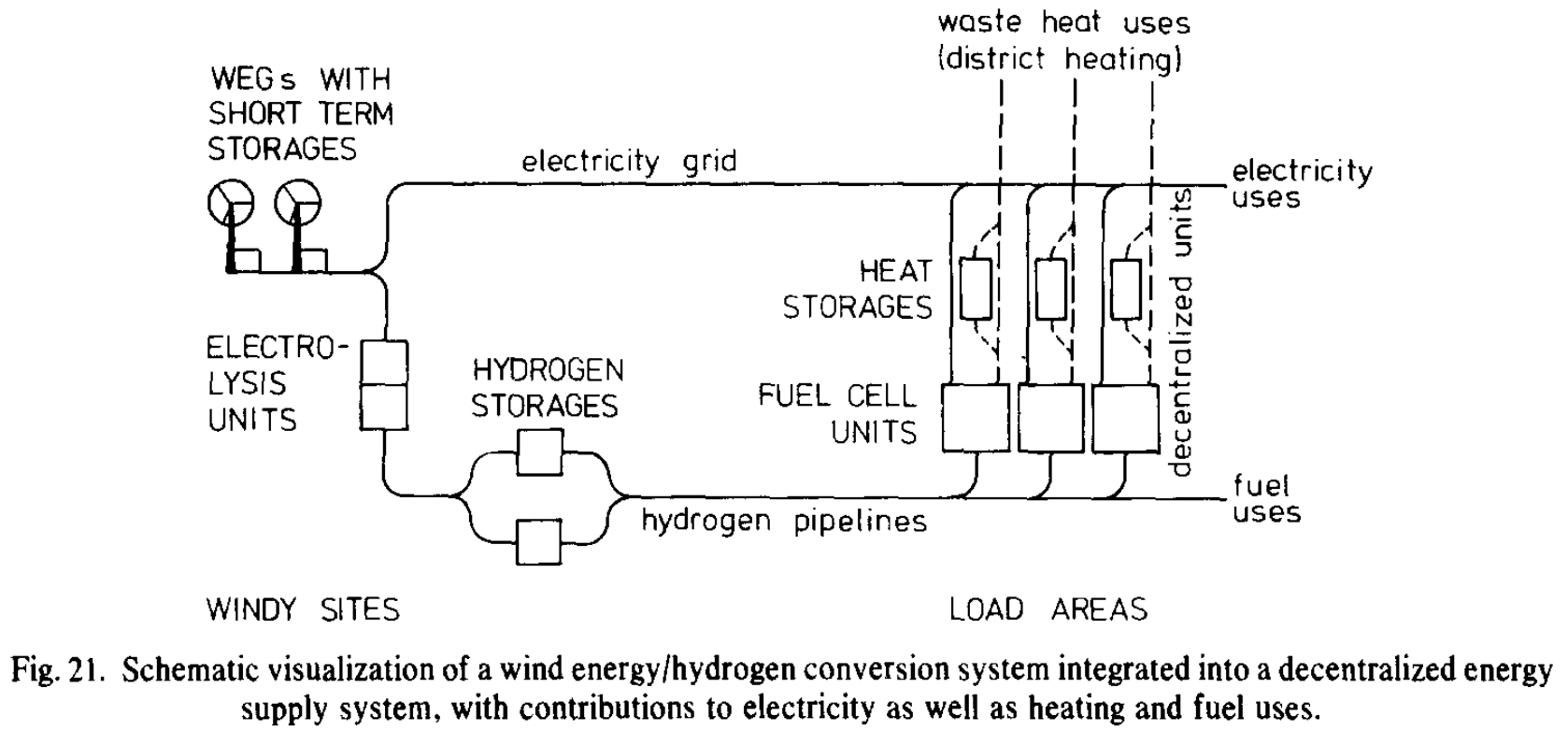
Here's his elegant explanation from the paper:
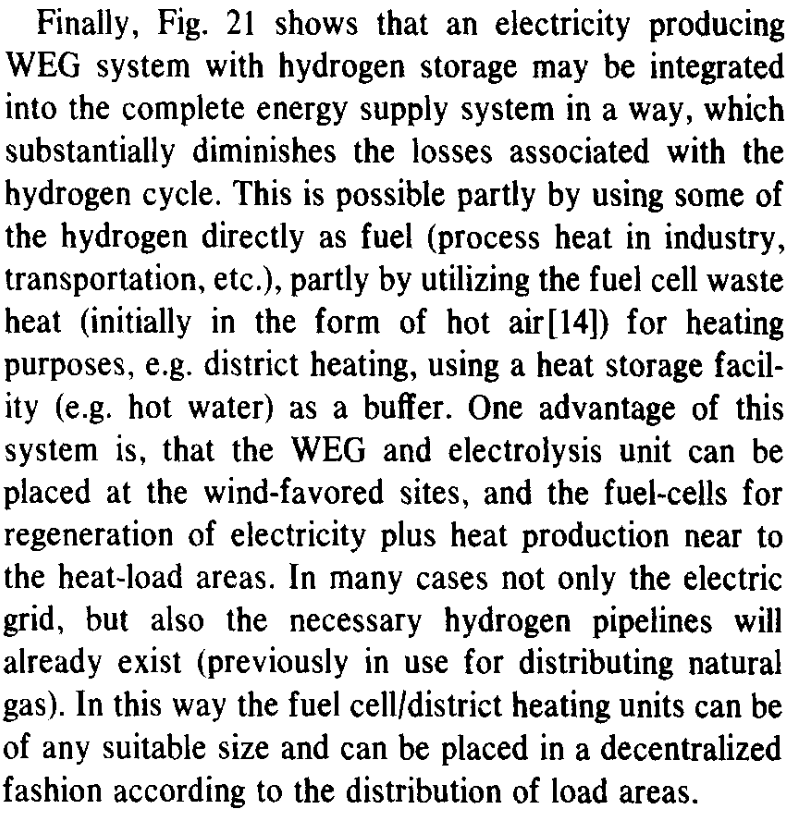
WEG = Wind Energy Generator